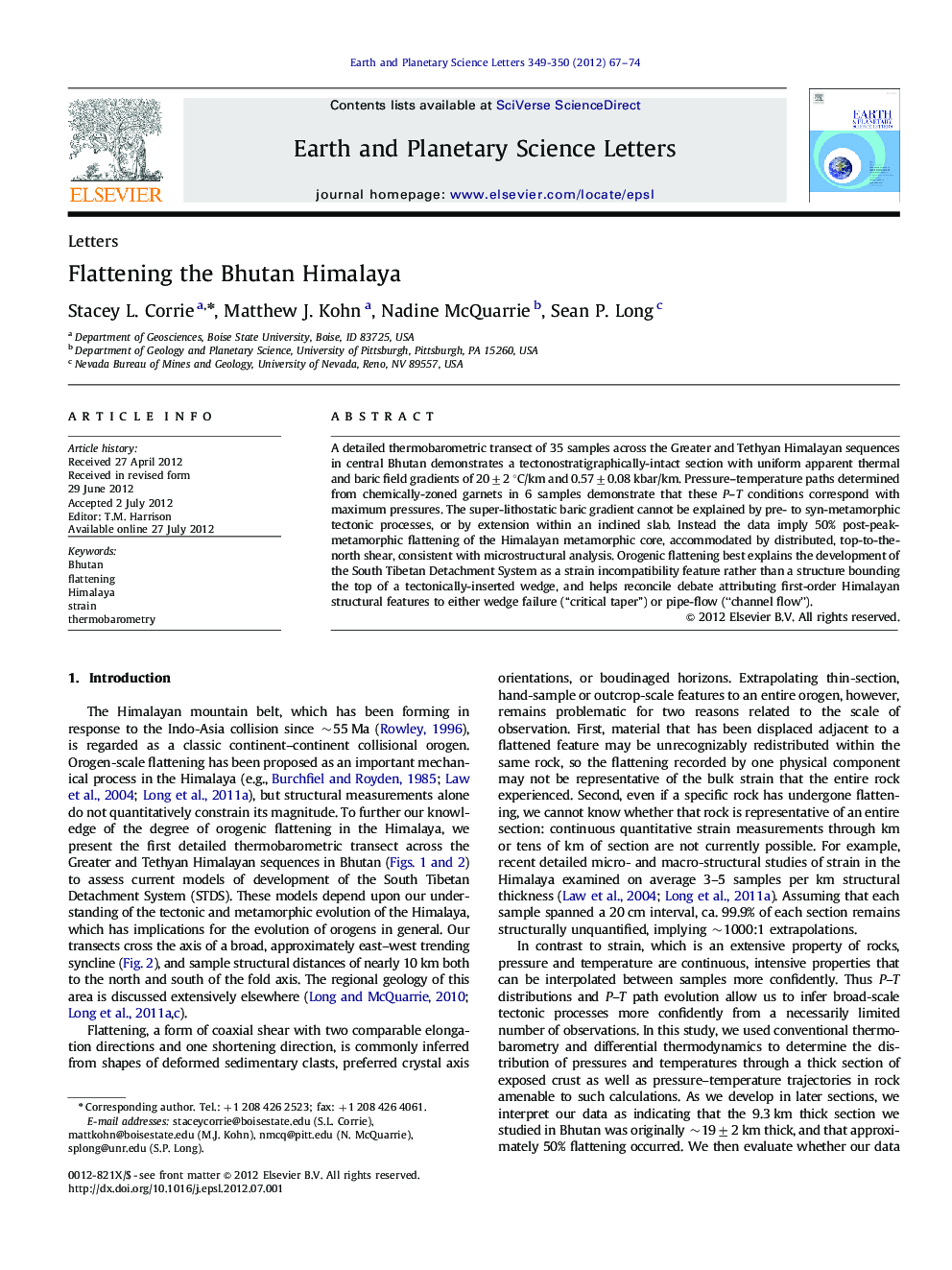| Article ID | Journal | Published Year | Pages | File Type |
|---|---|---|---|---|
| 4677396 | Earth and Planetary Science Letters | 2012 | 8 Pages |
A detailed thermobarometric transect of 35 samples across the Greater and Tethyan Himalayan sequences in central Bhutan demonstrates a tectonostratigraphically-intact section with uniform apparent thermal and baric field gradients of 20±2 °C/km and 0.57±0.08 kbar/km. Pressure–temperature paths determined from chemically-zoned garnets in 6 samples demonstrate that these P–T conditions correspond with maximum pressures. The super-lithostatic baric gradient cannot be explained by pre- to syn-metamorphic tectonic processes, or by extension within an inclined slab. Instead the data imply 50% post-peak-metamorphic flattening of the Himalayan metamorphic core, accommodated by distributed, top-to-the-north shear, consistent with microstructural analysis. Orogenic flattening best explains the development of the South Tibetan Detachment System as a strain incompatibility feature rather than a structure bounding the top of a tectonically-inserted wedge, and helps reconcile debate attributing first-order Himalayan structural features to either wedge failure (“critical taper”) or pipe-flow (“channel flow”).
► A detailed P–T transect discriminates tectonic models in central Bhutan. ► The South Tibetan Detachment System is not a discrete structure in this area. ► Neither thrusting nor simple shear of an inclined slab explain pressure gradients. ► Rocks were metamorphosed, flattened, and later folded. ► Orogenic flattening best explains the development of extensional shear.
